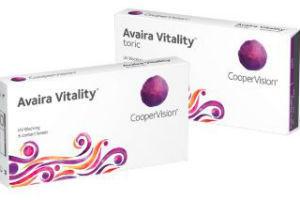
Jennifer L. Stewart, OD
As we move through May, many of us are spending more time outdoors than we have in years past. As I look out my window, I see many my neighbors out walking, running, biking or spending time with their children in their yards. Many of us are taking advantage of our different schedules and (hopefully) improving weather to get outside and move our bodies.
With May being designated as Ultraviolet Awareness Month by Prevent Blindness America, this is a great time to remind our patients, families and friends of the dangers of UV light and ways to protect ourselves from exposure.
Big Business
Our patients are spending an increasing amount of money on sunglasses and UV protection. According to The Vision Council, in 2017 103.3 million units of sunglasses were sold, totaling sales of over $4,197 million.[1] More than 13.2 million units of photochromic lenses were also sold.1 We must make sure we are properly educating and informing our patients on proper sunglass and lens protection. The American Optometric Association makes a recommendation of sunglasses whose lenses absorb 99-100% of UVA and UVB rays.[2] Wraparound sunglasses also help protect by blocking UV light from above, below and the sides. Our optical staff should be well versed in the benefits and science behind what we are prescribing, and why it is essential for our patients’ health and safety.
UV and Eye Health
UV radiation can play a role in the formation of cataracts, as well as the development of AMD and skin cancer. Patients also may have glare discomfort, photo-stress recovery time, and glare disability from sunlight. Proper use of sunglasses can also provide physical protection from objects and help decrease the risk of ocular injuries. Making sure our patients are informed about the importance of proper protection is key.
Start With The Why
It is tempting to start a conversation in an exam room about products, and then discuss the reason a patient needs it. We flip this around and start with the “why”. I start with the reason behind the recommendation and why it is important for them, and then follow with the product that will solve this problem. For example, Mr. Smith is an avid fisherman spending hours on a boat? A pair of wrap polarized sunglasses will help him spot the fish better and protect his eyes and skin from UV rays. Mrs. Jones is a tennis player and wants to be independent from glasses while playing? Prescribing contact lenses with UV filters let her know that we are prioritizing her visual needs and ocular health. Jimmy plays baseball, soccer and skis? He should be wearing UV protective eye wear year-round- even in the winter!
Don’t Forget Little Eyes!
Our pediatric patients tend to spend the most time outdoors- but most are going outside with no protection. According to The Vision Council, only 5 percent of American adults report their child(ren) “always” wear sunglasses, and 12.6 percent report they use “nothing” to protect their child(ren)’s eyes from UV.[3] While it is always recommended to have children wear hats and play in shaded areas, this is not a substitute for proper UV coverage. Sunglasses should offer both UVA and UVB protection. Some tips to have children engaged in wearing sunglasses include having children pick out a pair they like, make sure they are from a reputable retailer (not party favors!), and make sure they have a proper fit. Children with refractive errors can have a separate pair of sunglasses, clip-ons and utilize photochromic lenses.
The Power of Reflection
Keep in mind that reflected light can also pose a risk to our patients and can be just as damaging as direct UV. According to The Vision Council, water can reflect up to 100% of UV light, dry sand and concrete 25%, snow up to 85% and grass up to 3%.3 We need to be vigilant in reminding patients that proper UV protection is not only used on sunny, bright days. Our office sends out newsletters and frequent social media posts to remind our patients of this, especially in the winter!
Social Media Connections
Practices have a great opportunity to stay in touch with patients throughout the year through social media. With May being UV Awareness Month, practices can set up a calendar of posts educating patients about UV protection. This can also include promoting sunglass lines and vendors, fun facts and quizzes about sun wear (When was the first pair of sunglasses invented and where? 12th century China!) You can turn this into a patient engagement opportunity (create a poll!) or a prize giveaway to the first correct response. Having a sunglass sale or promotion to celebrate UV Protection Month? Ask patients to take a snapshot wearing their latest pair and tag your office (and #sunglasselfie!)
Manufacturers are also a great source of material - they often have high quality email blasts, pictures, posts and web banners to use for Facebook and Instagram posts.
Contact Lens Technology
I feel confident knowing my patients are getting the ultimate in comfort, vision, and UV blocker when I prescribe contact lenses. All clariti® 1 day lenses, including the sphere, multifocal and toric designs feature a silicone hydrogel material that provides both UVA and UVB blocker.[4] The MyDay® family of lenses is made with Smart Silicone chemistry, offering high oxygen transmissibility, a comfortable and easy to handle lens material, and also offers UVA/UVB blocker.4 The Avaira Vitality™ lenses leverage 3rd generation silicone hydrogel technology and have a Class 1 UV blocker, blocking more than 90% of UVA and 99% of UVB rays.4
As we look towards longer days, sunny skies and warmer weather, this is a great time to remind our patients about the importance of proper UV protection. By asking good questions, being informed, staying connected, and using the best products available, we can keep our patients healthy and protected 365 days a year.
Jennifer Stewart, OD is a partner at Norwalk Eye Care, a 2018 CooperVision Best Practices℠ Award Winner. She is also the Chief Vision Officer at Performance 20/20, a sports and performance vision training facility in Stamford, Conn. She can be contacted at jen.stewart@perform2020.com.
For more information about CooperVision’s unmatched portfolio of 1 day lenses and our 2 week options with UV blocker reach out to your CooperVision® sales representative or learn more at: https://coopervision.com/practitioner/our-products
[1] https://www.visionmonday.com/latest-news/article/midyear-2017-optical-markets-slowing-but-still-growing-visionwatch-survey-says-1/ [visionmonday.com]
[4] Warning: UV-absorbing contact lenses are not substitutes for protective UV-absorbing eyewear, such as UV-absorbing goggles or sunglasses, because they do not completely cover the eye and surrounding area. Patients should continue to use UV-absorbing eyewear as directed.







